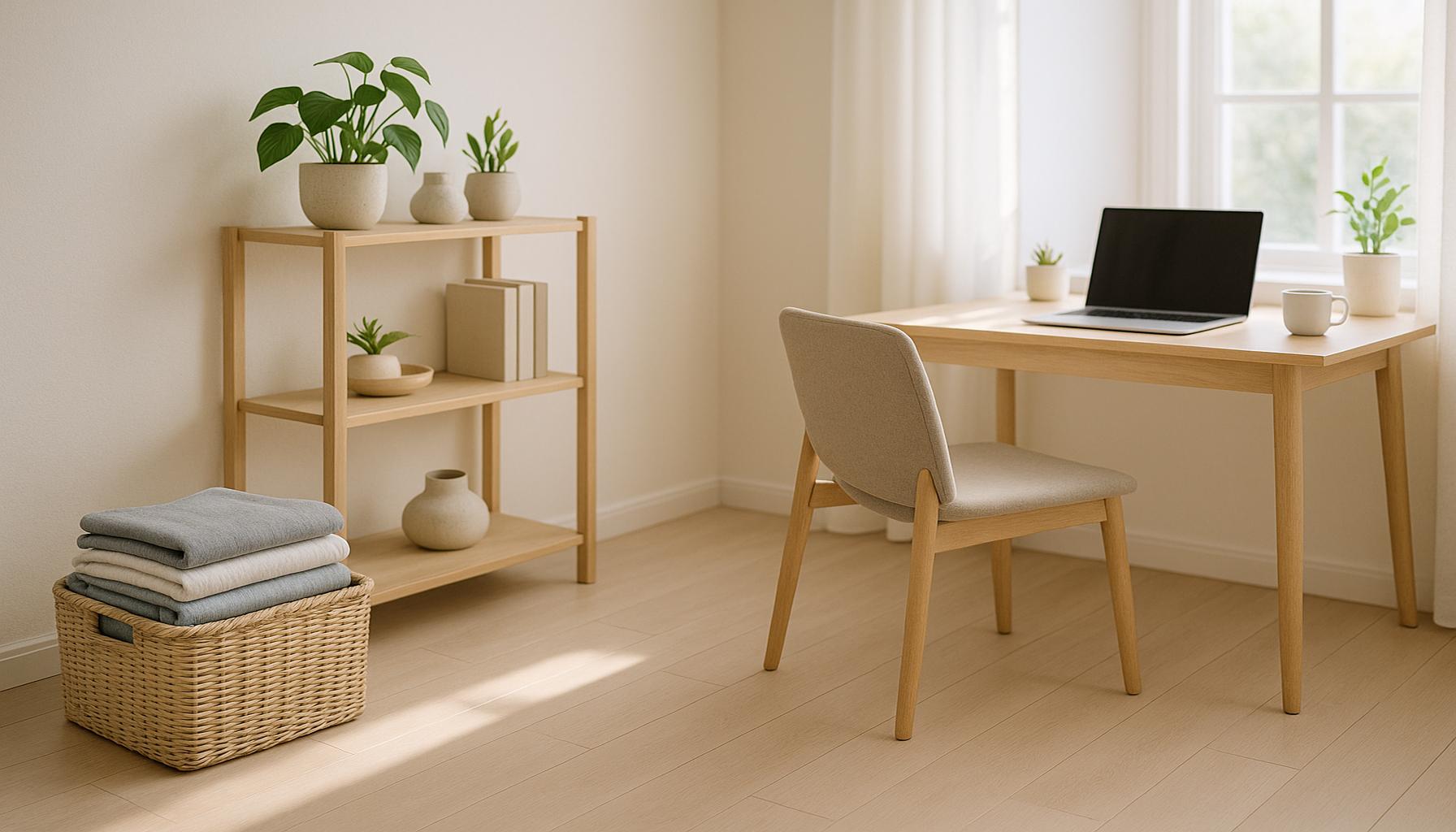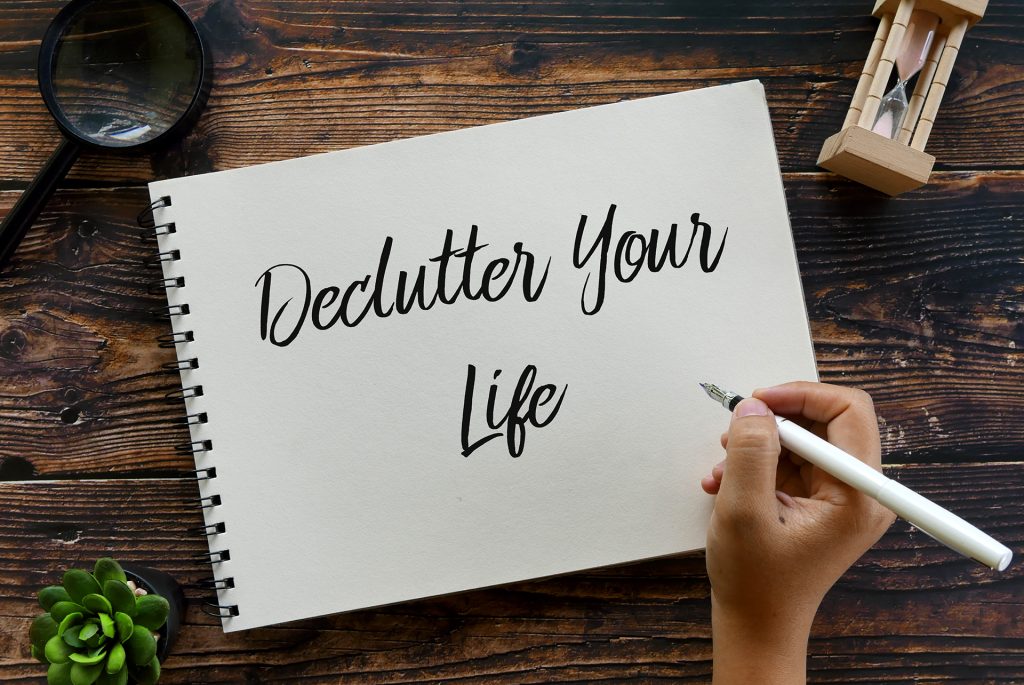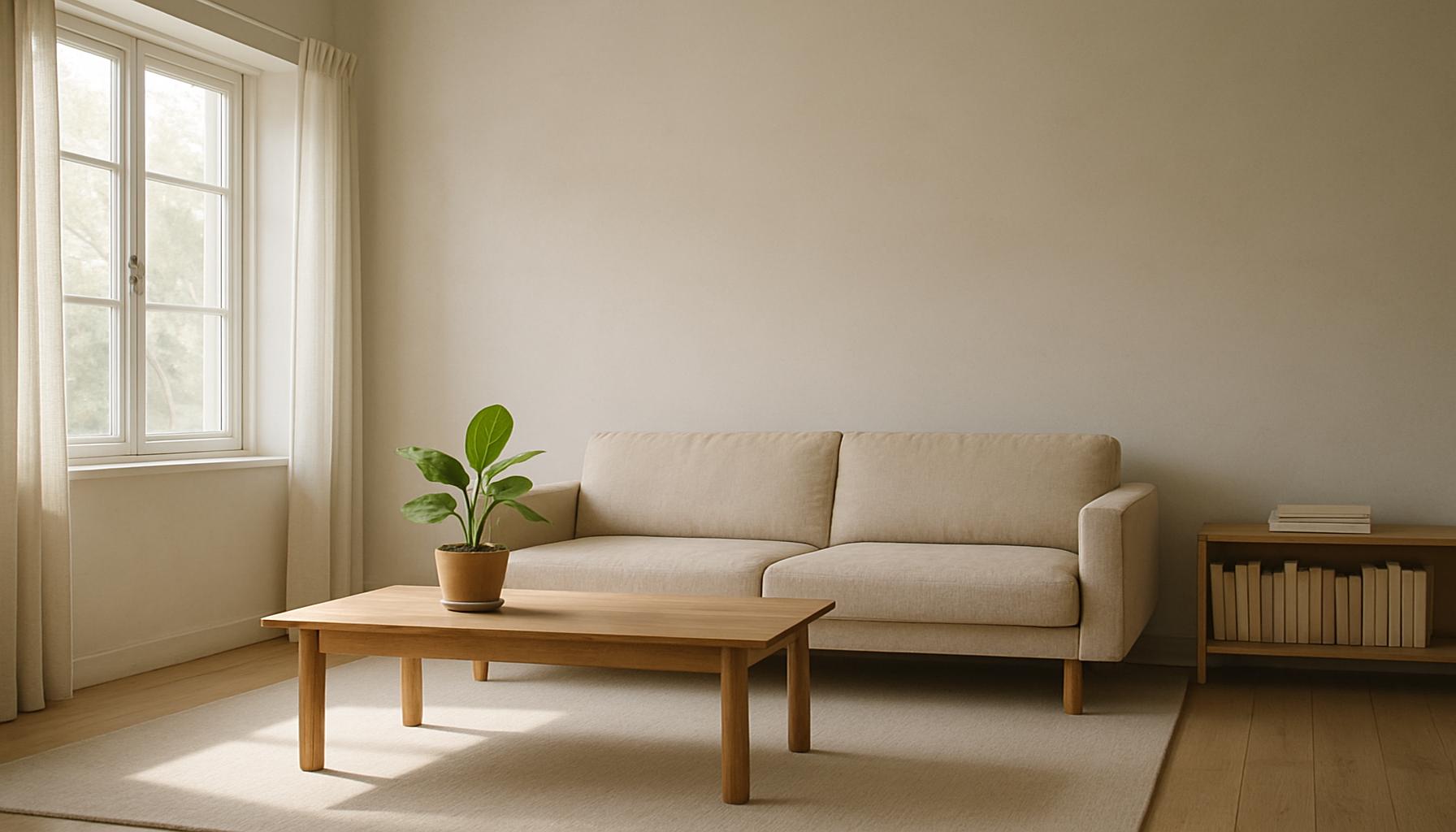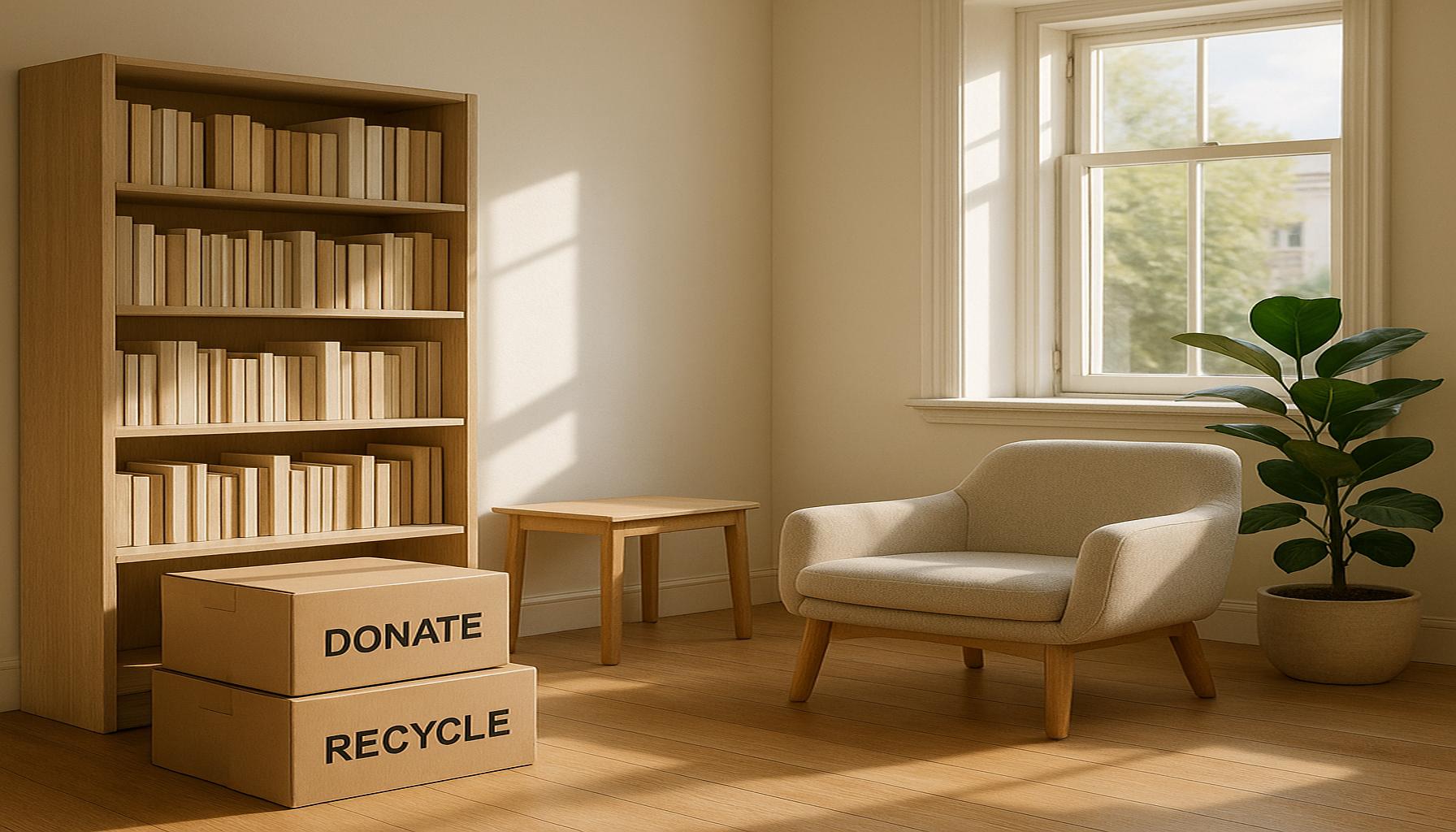Practical Decluttering Tips to Simplify Your Space Life

Introduction
In an age where consumerism reigns supreme, the art of decluttering has emerged as more than just a trend; it’s a gateway to minimalism and a life less encumbered by possessions. The relentless accumulation of items can lead to physical and mental clutter, making it essential to find effective strategies to reclaim your space and simplify your life. By embracing a minimalist mindset, you not only create a more organized environment but also pave the way for enhanced well-being and productivity.
As you embark on your decluttering journey, it’s crucial to have a roadmap. Here are some key benefits of decluttering:
- Reduced Stress: A tidy space often leads to a clearer mind.
- Increased Focus: Less clutter can enhance your ability to concentrate.
- Time Savings: Finding what you need becomes effortless in an organized environment.
- Better Decision Making: You will make intentional choices about what to keep and what to let go.
- Enhanced Creativity: A simplified space fosters creative thinking.
To help you get started, we present the Top 5 practical decluttering strategies that can transform both your space and your life. Get ready to dive into these actionable tips that promise to simplify your surroundings and elevate your everyday experience.
Top 5 Practical Decluttering Strategies: How to Simplify Your Space and Life
In today’s fast-paced world, where consumerism often takes the front seat, the concept of minimalism and decluttering has gained significant popularity. With relentless advertisements, ever-evolving trends, and a cultural push towards acquiring the “next best thing,” people are increasingly finding solace in the idea of simplicity. They are realizing that simplifying their physical spaces can lead to a more organized, serene life. Below is a ranked list of five practical decluttering strategies that will help you in your quest for minimalism, ranked from the least to the most effective.
5. Embrace the 30-Day Minimalism Game
The 30-Day Minimalism Game is a creative approach that uniquely combines fun with decluttering. The rules are simple: on the first day, you donate or throw away one item; on the second day, two items, and so forth, until you reach 30 items on the thirtieth day. By the end of the month, you will have removed almost 500 items from your space!

This method not only accelerates the decluttering process but also provides a sense of accomplishment as you see the numbers climb. It’s like turning a daunting task into a fun and challenging game. The game’s strength lies in its gradual increase in the number of items. This technique gently introduces you to the decluttering habit without overwhelming you.
According to a study on behavioral psychology, engaging in incremental activities over a period helps in forming new, positive habits. The 30-Day Minimalism Game may also increase your motivation and give you a sense of purpose. By the end of the month, not only will your space be more orderly, but you will have developed a stronger capacity to let go of unnecessary possessions.
4. Implement the Four-Box Method
The Four-Box Method is ideal for those looking to categorize their belongings systematically. Start by gathering four boxes and labeling them: Keep, Trash, Donate, and Relocate. As you go through your items, place each one in its respective box. This strategy urges immediate decisions about what you truly need and what you can part with.
- Keep: These are items you use regularly or have significant sentimental value. Remember, keeping an item should be a deliberate choice based on its contribution to your current lifestyle.
- Trash: This box is for broken items or things that no longer serve a purpose.
- Donate: Good-condition items that you no longer need can find a better home elsewhere. Even lightly used clothing, books, and toys can make a significant difference to charitable organizations.
- Relocate: Sometimes, an item is simply in the wrong spot. This box is for things that belong in a different area of your home.
By categorizing your belongings, you create an organized system that simplifies the decluttering process, making it easier to let go of excess items. The visual progress of seeing piles diminish and boxes fill up can be tremendously satisfying.
3. Use the One-Year Rule
The One-Year Rule is a straightforward method that prompts you to evaluate your belongings based on usage. If you haven’t used an item in the past year, it’s likely you won’t use it in the future either. This strategy shines particularly in the realms of clothing, gadgets, and decor.
Consider how often you’ve reached for items buried at the back of your closet or tucked away in storage. Statistics show that over 80% of items in our wardrobes are rarely worn. By applying the One-Year Rule, you can significantly reduce clutter and free up valuable space. It helps shift the mindset from stockpiling to investing in versatile, high-quality items that you genuinely treasure.
This strategy also aids in recognizing consumer behavior patterns. Why do we hold on to certain items? The broader lesson is the importance of making intentional purchase decisions, ultimately leading to long-term savings and less environmental waste.
2. The Two-Minute Rule
The Two-Minute Rule, popularized by David Allen in his influential book “Getting Things Done,” suggests that if a task takes less than two minutes to complete, you should do it immediately. Applied to decluttering, this rule becomes a powerful motivator.
Imagine the simple act of sorting mail, returning items to their designated spots, or quickly wiping down surfaces. Instead of setting these tasks aside for later, tackle them in real-time. This practice fosters a culture of proactive organization and can accumulate into substantial upgrades to your space over time.
Research indicates that completing small tasks boosts productivity and can increase mental clarity. That clarity can make you more effective in managing larger projects, including intensive decluttering sessions or entire home reorganization projects.
1. Adopt a Minimalist Mindset
At the pinnacle of our list is the overarching approach of adopting a Minimalist Mindset. This philosophy embodies more than just physical decluttering—it transforms your outlook on owning possessions and living a simpler life.
Embracing minimalism means integrating the belief that less is more into your everyday life. It’s about assessing the utility, beauty, and personal significance of each item you own. It involves a commitment to intentional living, where every possession is thoughtfully considered for its role in your life.
Studies have shown that individuals who cultivate a minimalist mindset report lower levels of stress and increased satisfaction. Shifting focus from material acquisitions to personal experiences can lead to enhanced emotional wellbeing and a more fulfilling existence. This paradigm shift encourages you to weigh the emotional contentment of experiences over the fleeting satisfaction of new items.
In conclusion, each of these strategies offers a valuable pathway to simplifying your space and life. However, adopting a Minimalist Mindset emerges as the most transformative and enduring. It sheds light on what is truly important, paving the way for a more thoughtful and organized living space. Through embracing minimalism, you may find yourself on a journey towards greater happiness and a life of intentional significance.
| Category | Key Features | Advantages | Disadvantages | Who Benefits Most |
|---|---|---|---|---|
| Minimalism | Focus on owning fewer items and prioritizing quality over quantity. | Reduces clutter, enhances space functionality, and encourages mindful consumption. | Can feel restrictive and may not suit everyone’s lifestyle preferences. | Individuals seeking mental clarity and a simpler life. |
| Decluttering Practices | Strategies like the KonMari Method, one-in-one-out rule, and seasonal reviews. | Promotes regular organization and cultivates a habit of reassessing belongings. | May require ongoing commitment and motivation to maintain. | Families and individuals looking for sustainable organization methods. |
| Digital Decluttering | Organizing digital files, mail, and apps for easier access. | Effective use of technology to streamline tasks and reduce distractions. | People can struggle to let go of digital archives and data. | Tech-savvy individuals and professionals managing large volumes of information. |
| Mindfulness | Developing a conscious awareness around belongings and their purpose. | Enhances overall well-being by fostering thoughtful decision-making regarding possessions. | Can feel overwhelming for those new to mindfulness practices. | Individuals seeking to improve mental health and emotional clarity. |
Decluttering is not just about removing items from your space; it is about creating an environment that reflects your values and enhances your life. Adopting a mindset of minimalism encourages individuals to focus on owning only the essentials, which further fosters clarity in daily decision-making and stress reduction.Incorporating effective decluttering practices into daily routines can help maintain a sustainable, organized environment. These strategies encourage individuals to regularly assess their belongings and reassess what truly brings joy and utility into their lives.It is important to recognize that digital clutter can be just as impactful as physical clutter. Managing your digital assets through organized file systems and regular clean-ups not only reduces distraction but also enhances productivity.In addition, mindfulness plays a significant role in maintaining a decluttered life. By being more aware of consumption habits and cultivating intentional behaviors, individuals can simplify their surroundings and, ultimately, their lives for improved mental health and emotional well-being.
Frequently Asked Questions about Decluttering Strategies
What is the basic concept of decluttering?
The basic concept of decluttering revolves around simplifying your living space by removing unnecessary items. It is about creating an environment that is both functional and serene. The goal is to keep belongings that add value and purpose to your life while eliminating those that do not serve a useful or joyful function. This approach can lead to increased productivity, reduced stress, and a more mindful lifestyle.
How can decluttering improve my mental health?
Studies suggest that a cluttered environment can lead to feelings of anxiety and overwhelm. By decluttering, you can reduce mental distractions and create a physical space that encourages peace and relaxation. Having less clutter can make it easier to focus and feel calm, fostering an environment that supports mental well-being. Furthermore, the process of decluttering itself can be therapeutic, giving you a sense of control and accomplishment.
What are some common mistakes people make when decluttering?
One common mistake is trying to declutter everything at once, which can be overwhelming. It is more effective to tackle one area at a time, allowing you to focus and see immediate results. Another mistake is holding onto items due to guilt or potential future use, which can hinder the process. It’s important to challenge these impulses and focus on keeping items that genuinely contribute to your happiness and goals. Lastly, failing to create a functional system for organizing what remains can lead to re-cluttering.
Is there a recommended approach or system for effective decluttering?
There are several popular approaches to decluttering, each with its own merits. The KonMari Method, developed by Marie Kondo, emphasizes keeping only items that spark joy, while Peter Walsh’s Trash/Donate/Keeper method suggests categorizing items during the decluttering process. Identifying an approach that resonates with you and fits your lifestyle is crucial for maintaining a clutter-free environment long-term.
How can I keep my space decluttered after organizing it?
Maintaining a clutter-free space involves adopting habits that prevent the accumulation of unnecessary items. Regularly reviewing and purging belongings can help maintain clarity. Additionally, being mindful of what enters your space—by practicing thoughtful purchasing and resisting impulse buys—can ensure that your surroundings remain organized. Implementing organizational systems and being intentional with your space can reinforce a clutter-free lifestyle.
Conclusion: Embracing Decluttering for a Simplified Life
As we have explored throughout this article, decluttering is far more than a simple act of tidying up. It is a transformative approach that can significantly enhance both your physical environment and mental well-being. By implementing practical strategies for decluttering, such as setting clear goals, adopting the “one in, one out” rule, and regularly reassessing belongings, individuals can create a space that is both harmonious and functional.
Decluttering is intrinsically linked to the principles of Minimalism, underscoring the importance of intentional living. It encourages us to evaluate what truly adds value to our lives and to be mindful of our consumption patterns. Through decluttering, we not only rid ourselves of excess possessions but also confront a cluttered state of mind, making room for clarity and focus.
Moreover, the ripple effect of a decluttered space cannot be underestimated. It can lead to increased creativity, reduced stress, and heightened productivity. By simplifying our surroundings, we simplify our lives, allowing us to prioritize relationships and experiences over material goods. Additionally, by embracing these practices, we contribute to a more sustainable lifestyle, reducing our ecological footprint and promoting conscious consumption.
In embracing practical decluttering strategies, we are not just freeing our spaces of physical clutter, but we are also embarking on a journey towards a more meaningful and balanced life. This exploration of space and self invites ongoing reflection and intentionality, pivotal elements in pursuing a simple, yet profoundly rich existence. Let us not only consider decluttering as a task but as a continuous practice that can integrate seamlessly into our daily lives, enhancing our well-being and fostering a deeper connection with what truly matters.


